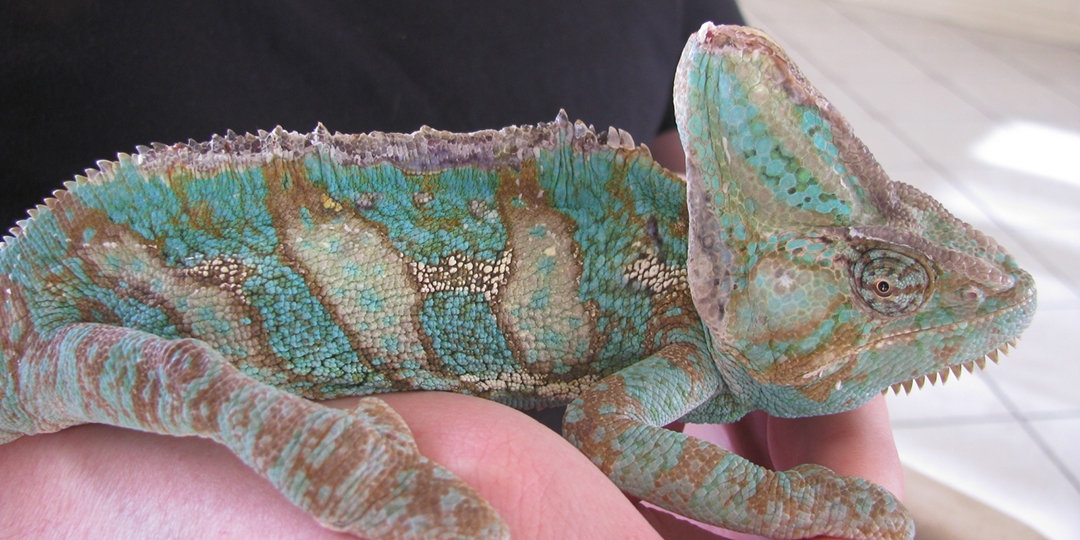Burns
Description
When presented with the need for heat, chameleons will bask. If the heat is too intense, actual physical damage will occur and the chameleon’s skin will burn. This often shows up on the back spin and the top of the head. Veiled Chameleons are particularly at risk due to their need to warm their body, but having a casque that rises an inch or more above them.
Chameleons seem to not understand burns or their need for warmth overrides the pain. Why chameleons will stay under a bulb that is burning them is unknown, but it is a common danger.
Symptoms
Burns can occur anywhere, but are most commonly seen on the casque and back spines due to those being the closest body parts to the light over head.
When burns occur you will notice gray areas and back spines melted off. There can be open wounds.
Treatment
Home remedies such as gently rubbing on silvadene cream are appropriate between the time you discover the injury and when you are able to get to a veterinarian.
Husbandry Correction
The issue is in the heat gradient of our lamps. With an incandescent lamp the temperature changes with each inch of distance away from the bulb. The closer you measure the greater the change across each inch. The further away you are the more gradual the change. This is why the idea use of a heat lamp would be to get a high wattage bulb (100W or 150W) and placing it 6 to 9 inches above the cage. This way, the heat is more gentle and is more consistent across more of the basking branch. Although the heat source is more intense, it allows the chameleon to catch the right temperature further away where the heat changes less and the chameleon can 1) fit its whole body into the right temperature and 2) the temperature 1″ higher is not dramatically different.







